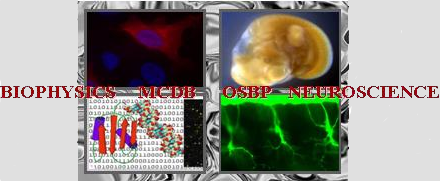Poster abstracts
Poster number 70 submitted by Jack Bozik
Serine protease inhibitor Serpina3n plays a potentially protective role for oligodendroglia during MS-like immune attacks
Jack B. Bozik (Molecular, Cellular, and Developmental Biology Graduate Program), Emily E. Fresenko (Department of Neurology), Amy Webb-Hite (Department of Biomedical Informatics), Cole A. Harrington (Department of Neurology)
Abstract:
Multiple sclerosis (MS) is a chronic autoimmune disease that develops when a person’s own immune cells attack myelin sheaths that wrap around the axons of neurons as well as the oligodendroglia which produce those myelin sheaths. Recent research from our lab and others has identified an immune responsive subset of oligodendroglia (iOLs/iOPCs). When performing singe cell RNA-sequencing (scRNA-seq) mice that were exposed to a MS experimental model known as experimental autoimmune encephalomyelitis (EAE) these iOPC/iOL showed upregulation of potentially protective markers. One of which is a secreted serine protease inhibitor known to be within the central nervous system (CNS) called Serpina3n. Serpina3n has been shown to play a role in numerous pathologies and pathways including complement signaling, and wound healing in Alzheimer’s. Our objective is to determine whether Serpina3n is induced by and plays a protective role for oligodendrocytes during EAE.
During EAE both aged and young mice lineage traced OPCs (Pdgfra-CreERT;RCE:loxP) show an upregulation of a subset of cells that express potentially protective markers (iOPC/iOLs) including serine protease inhibitor Serpina3n. Within young and aged lesions there is an enrichment of iOPC/iOLs (Sox10+Klk6+Ptgds+/-) and reduction of non-immune OPC/OL (Sox10+Klk6-Ptgds-) compared to naïve white matter. When naïve OPCs are co-cultured with MOG-reactive Th17 T cells they show a significant upregulation of Serpina3n expression. Mice with cKO of Serpina3n in differentiated oligodendrocytes (PLPCreERT+;RCE+;Serpina3nfl/fl) experienced significantly worse EAE clinical scores compared to controls. Upregulation of neuroprotective molecules like Serpina3n may affect the degree of inflammatory activity, lesion size, and OPC/OL survival within the inflammatory lesion environment both in young and aged animals. Opening the possibilities of new MS therapies focused on glial protection.
Keywords: Neurology, Immunology, Cell Biology
